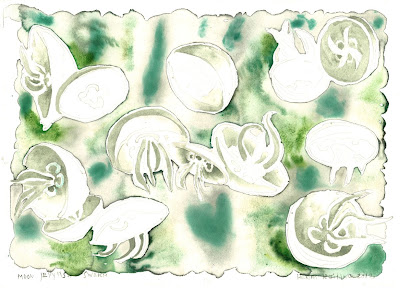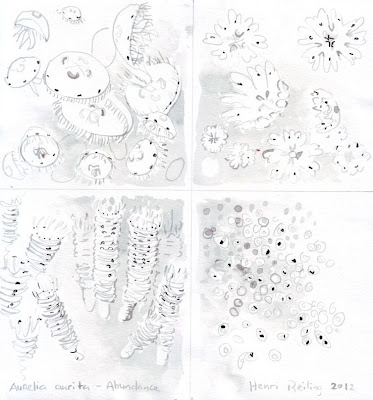Naturalis in Leiden presenteert een tijdelijke opstelling onder de titel “Naturalia”. Stukken uit het gesloten Zoölogisch Museum van de universiteit van Amsterdam hebben een nieuw tehuis gevonden en worden nu getoond voordat ze niet zichtbaar voor het publiek bewaard worden in de depots. De entree met onder meer composities van schelpen, tropische vogels is indrukwekkend.
Echter, halverwege de tentoonstelling verschuift de focus van “verzameling” naar ”het verzamelen”, of preciezer: “het wetenschappelijk verzamelen op expedities”. Dus eigenlijk zijn het twee tentoonstellingen onder één noemer.
Het verzamelen, ingegeven door het bijzondere, het interessante, en de visueel aantrekkelijke eigenschappen van de objecten uit de natuur komt echter tot op heden voor. De verzameling “Monsters” die Sea Life in Scheveningen op dit moment bijvoorbeeld laat zien illustreert die belangstelling. Een van de getoonde monsters is daar een spinkrab, een soort die ook bijna steevast terug te vinden is tussen “naturalia”.
De verschuiving naar “wetenschappelijk verzamelen” suggereert een blinde vlek voor de esthetische en culturele aspecten van naturalia-verzamelingen. Een bijna religieuze preoccupatie met wetenschap an sich is te vermoeden.
(Ik bezocht de tentoonstelling op 10 -2 -2012)
The Dutch Natural History Museum “Naturalis” in Leyden presents a special exhibition titled "Naturalia" (natural history objects) from the now closed Zoological museum of Amsterdam University found a new home end they are put on show before they will be invisible for the visitors in the storerooms.
The entrance encompassing among other things compositions of shells and tropical birds is impressive.
However, midway the exhibition the focus shifts from “collection” to “collecting”, or even more precisely: “scientific collecting at exhibitions”. In fact, there are two exhibitions under one heading.
Collecting, inspired by the extraordinary, the interesting and the visual attractive features of natural objects is alive until today. For instance, Sea Life in Scheveningen shows a collection of “Monsters” that illustrates this orientation. One of the monsters that there is on show is a Spider Crab, an organism that is also almost invariably present among “naturalia”.The shift to “scientific collecting” suggests a blind spot for the aesthetic and cultural dimensions of naturalia collections. An almost religious preoccupation with science as such may be sensed.
( 10-2-2012, I visited this exhibition)









































